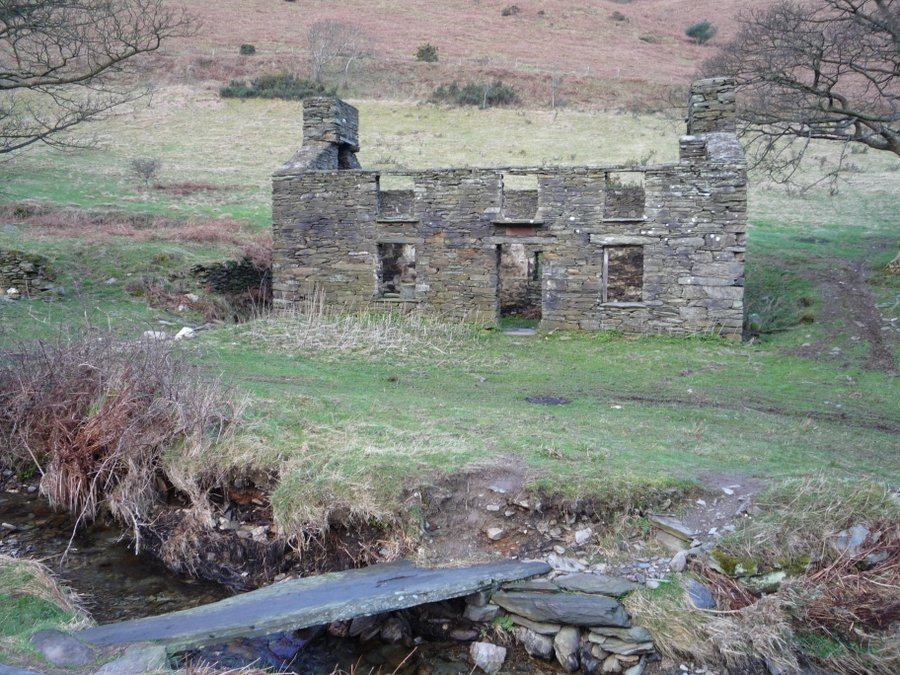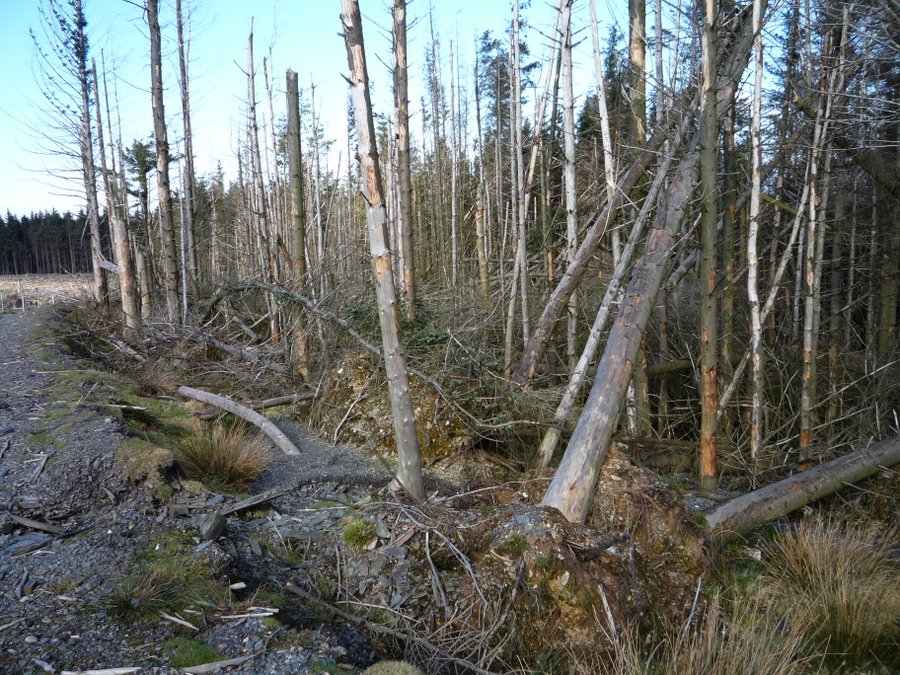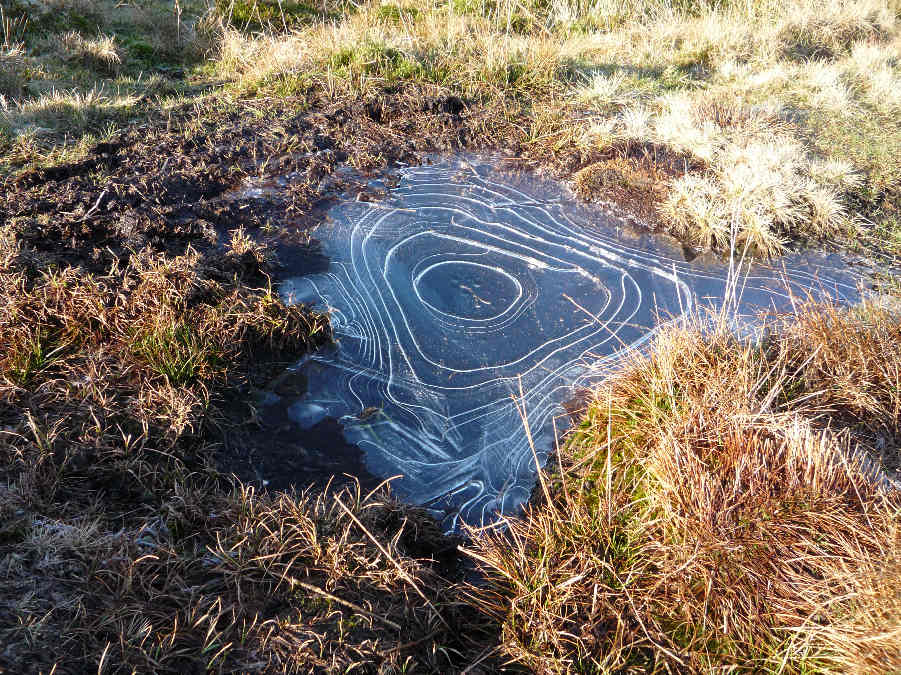Another old ruin
Monday 21st November, 2011
We started from the Glen Helen car park and
walked up through Eairy Beg plantation. There were five of us (seven if you
count the dogs) because Trevor's daughter came with us this morning. About half
the way up the hill we passed the old farmhouse, which gave the plantation its
name. It must have had a view down the glen before the trees were planted but
now it is completely hidden amongst the conifers. It wasn't as dark in the
plantation as it is in summer because the larches have lost their
leaves.
The main purpose of this walk was to take Dorothy
to see the ruins of Dreembeary (or Dreeymbeary) - the remains of a small stone
building in the middle of nowhere. Dorothy loves taking photographs of ruins
and Dreembeary must be one of the few on the Island that she hadn't visited. It
isn't easy to find but we had seen it from across the valley on a previous
walk. I wish I could find out a bit about the history of the ruin because it is
rather unusual. The openings in the front of the building were faced with old
bricks which were set into the stone, and white quartz boulders were mixed in
with the usual Manx slate.
It is not a conventional design for a dwelling,
with a wide opening at the back and four openings for doors or possibly windows
in the front. Also there is no evidence of a hearth or chimney at the one end.
It is impossible to see the construction of the other end because there is so
much fallen stone.
The lines of slate laid out behind the house
didn't look as though they are collapsed dry stone walls. I wondered whether
the building had been partly demolished with the intention of reclaiming the
materials and the slate had been laid out many years ago - ready to be
transported away - and is still waiting for someone to fetch it. One of the
best known Manx sayings is Traa dy Liooar, which means "time
enough".
From Dreembeary we walked down towards the
Rhenass River. Cattle had been driven up the footpath and we had to pick our
way through churned up mud. We turned off the footpath near Ballasayle and took
an illegal route across some fields and climbed over a fence into Glen Helen. I
don't like trespassing but there were no crops or animals in the fields - and
they were a safe distance from the farmhouse . . . and any irate farmers. We
headed for an old hexagonal ruin in the glen - probably a summerhouse - but
Dorothy stopped on the bridge to take photographs of the Blaber river
below.
After having a short break for snacks at the
remains of the "summerhouse", we continued along a path near the top of the
Glen. I had never walked along it before - didn't even know that it existed -
as we usually take the more popular paths down in the valley alongside the
river. The "new" path took us back to the car park where Tim dried the dogs and
wiped off the worst of the mud before allowing them in the car.




















































